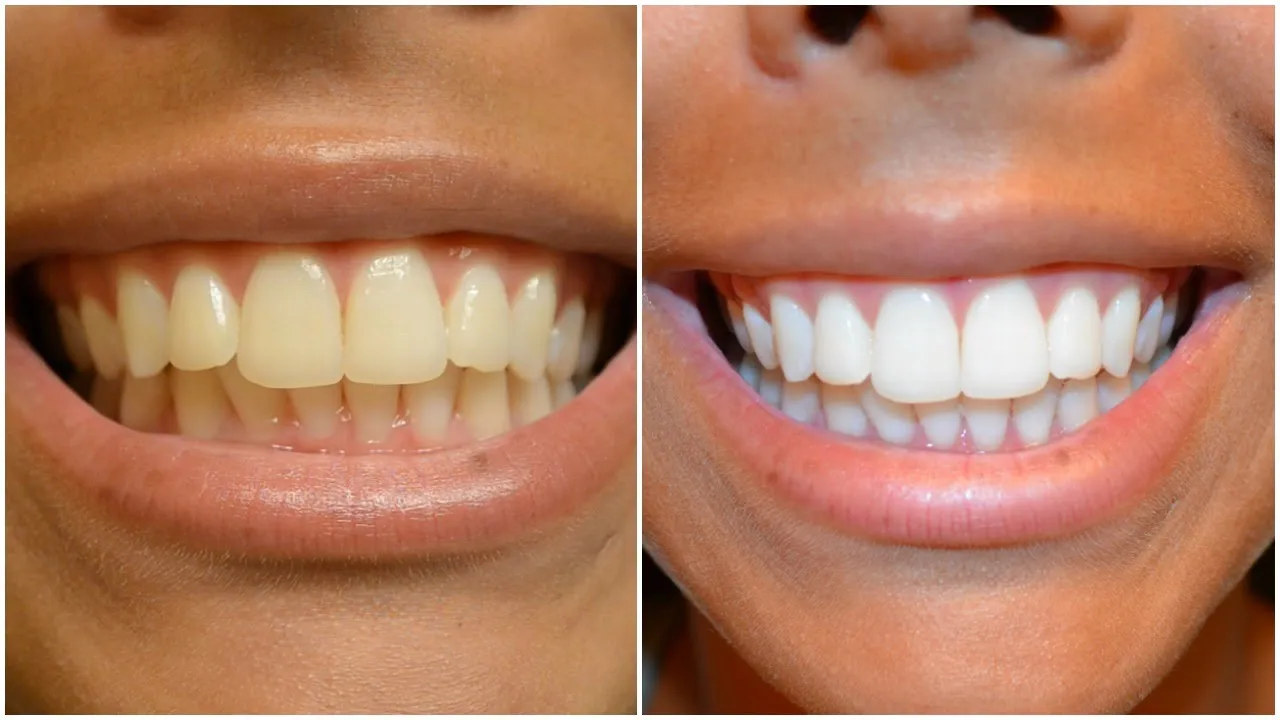Understanding Teeth Whitening Strips
Teeth whitening strips have become a popular and convenient method for brightening smiles. These thin, flexible strips are coated with a whitening agent, typically hydrogen peroxide or a similar compound, and are designed to adhere directly to the surface of your teeth. The active ingredient penetrates the enamel, breaking down stains and discoloration caused by factors such as coffee, tea, tobacco, and aging. The convenience of at-home application, combined with the relatively low cost compared to professional treatments, makes teeth whitening strips a compelling choice for many individuals seeking a brighter smile. However, understanding how these strips work and how to use them properly is crucial for achieving optimal results and minimizing potential side effects. This guide delves into the specifics of using teeth whitening strips effectively, addressing everything from application techniques to aftercare and potential issues.
Types of Teeth Whitening Strips
Not all teeth whitening strips are created equal, and understanding the different types available can help you choose the best option for your needs and preferences. The primary difference lies in the active whitening agent used. The two most common types are those containing hydrogen peroxide and those utilizing non-peroxide formulas. Each type offers a unique set of benefits and considerations, which are essential to understand before making a purchase. The concentration of the whitening agent also varies among brands, which will impact the duration of use and the overall results. Always read the product labels carefully and consult with your dentist if you have any questions or concerns about which type of whitening strip is most appropriate for your specific dental health profile.
Hydrogen Peroxide Strips

Hydrogen peroxide is the most common active ingredient found in teeth whitening strips. It’s a powerful oxidizing agent that penetrates the enamel to break down stain molecules. Strips containing hydrogen peroxide typically offer faster and more noticeable results compared to non-peroxide alternatives. The concentration of hydrogen peroxide varies, with higher concentrations often leading to quicker results but also potentially increasing the risk of sensitivity. The effectiveness of hydrogen peroxide strips is well-documented, and they are a popular choice for those seeking significant improvement in the brightness of their teeth. However, it’s essential to use these strips according to the manufacturer’s instructions to minimize the risk of adverse effects.
Non-Peroxide Strips
Non-peroxide whitening strips utilize alternative whitening agents, such as sodium chlorite. These strips are often marketed as a gentler option, making them suitable for individuals with sensitive teeth or those who want to avoid the potential side effects of hydrogen peroxide. While non-peroxide strips may take longer to produce visible results, they can be a good choice for people who prioritize comfort and reduced sensitivity. The whitening action is generally slower and less dramatic, but still effective for certain types of stains. Before starting, it’s crucial to carefully read the product details and understand the potential effects of the chosen ingredient.
How Long to Leave Whitening Strips On
The duration for which you should leave teeth whitening strips on varies depending on the product, the concentration of the whitening agent, and your individual dental characteristics. Always read and carefully follow the instructions provided by the manufacturer. Leaving the strips on for longer than recommended can increase the risk of tooth sensitivity and gum irritation without necessarily improving the whitening results. Understanding the recommended usage time for your specific product is the first and most important step toward safe and effective teeth whitening. If you have any questions, consult with your dentist.
Following the Instructions

The manufacturer’s instructions are the cornerstone of safe and effective use of teeth whitening strips. These instructions are based on rigorous testing and are designed to provide the best results with minimal risk. The instructions will specify the duration for which to apply the strips, which is usually between 30 minutes to an hour, depending on the product. They will also indicate how often to use the strips (e.g., once or twice daily) and the total length of the treatment period (e.g., 14 days). Ignoring these instructions can lead to unsatisfactory results, increased sensitivity, or other adverse effects. Always adhere to the manufacturer’s guidelines to ensure both the safety and effectiveness of the treatment.
Factors Influencing Strip Duration
Several factors can influence how long you should leave teeth whitening strips on, beyond the manufacturer’s general recommendations. These factors relate to your individual dental health and the severity of the stains you are trying to address. For example, people with more sensitive teeth might need to use strips for a shorter duration or less frequently, or choose a less potent formula. The enamel thickness and the type and severity of staining also play a role. Consulting your dentist can provide insights into these factors and help you determine the optimal whitening strategy.
Tooth Sensitivity
Tooth sensitivity is a common side effect of teeth whitening. The whitening agents can temporarily irritate the nerves in your teeth, leading to sensitivity to hot or cold foods and drinks. If you experience significant sensitivity, it may be necessary to reduce the duration of strip application or the frequency of use. Using a toothpaste specifically designed for sensitive teeth can also help alleviate the discomfort. If sensitivity persists or worsens, consult your dentist to determine the best course of action.
Enamel Thickness

The thickness of your tooth enamel can influence the effectiveness and duration of teeth whitening strip application. People with thinner enamel may experience greater sensitivity and should exercise caution. Thinner enamel may allow the whitening agent to penetrate more rapidly and reach the underlying dentin, where the tooth’s nerves are located. Individuals with thinner enamel may want to opt for shorter treatment times or lower-concentration products. Consulting a dentist to assess your enamel thickness can help you personalize your teeth whitening strategy.
Stain Severity
The degree of staining on your teeth will affect the length of time it takes to see results. More stubborn stains from coffee, tea, or tobacco may require longer application times or multiple treatment cycles. However, it is essential to avoid excessive application to minimize the risk of sensitivity and other side effects. You should consult your dentist on the best approach. In severe cases, professional teeth whitening may be a more effective and safer option than prolonged use of at-home strips.
Step-by-Step Application Guide
Proper application is crucial for achieving the best results from teeth whitening strips. Following the steps carefully will help ensure even whitening and minimize the risk of side effects. Always wash your hands before handling the strips to maintain hygiene. Before using the strips, it’s essential to brush your teeth gently to remove any surface debris and plaque, but avoid brushing immediately before application, as this can increase sensitivity. Following these steps will help you use the strips effectively and safely. If you’re unsure about any part of the process, refer to the product instructions or consult with your dentist.
Preparing Your Teeth

Before applying teeth whitening strips, it’s essential to prepare your teeth properly. Gently brush your teeth to remove any surface debris and plaque. However, do not brush immediately before applying the strips, as this may increase sensitivity. Floss your teeth to remove any food particles that could interfere with the whitening process. Rinse your mouth with water to remove any remaining debris. Make sure your teeth are dry before applying the strips. This will help the strips adhere better and ensure the whitening agent contacts the tooth surface effectively. Avoid using mouthwash immediately before applying the strips as it may create a barrier.
Applying the Strips
Once your teeth are prepared, carefully apply the whitening strips according to the product instructions. Peel the strip from its backing. Apply the gel-coated side of the strip to the front of your teeth, aligning it with your gumline. Gently press the strip to ensure it adheres to your teeth. Fold any excess strip over the back of your teeth to secure it. Make sure to position the strips correctly so they cover the majority of the visible surface of your teeth. Avoid touching the strips too much to prevent them from becoming less sticky. Once applied, follow the instructions and leave the strips on for the recommended amount of time.
Removing the Strips
After the recommended application time, carefully remove the strips. Gently peel the strips off your teeth. Discard the used strips. Rinse your mouth with water to remove any remaining gel. Avoid swallowing any residual gel. Inspect your teeth to assess the results. If you notice any gel residue, gently brush your teeth. Avoid excessive brushing or using abrasive toothpaste immediately after removing the strips, as your teeth may be more sensitive. If any irritation persists, consult your dentist.
Post-Treatment Care

Proper post-treatment care is essential for maintaining the results of teeth whitening and minimizing any potential side effects. This includes avoiding certain foods and drinks, maintaining good oral hygiene, and taking steps to maintain a bright smile. Following these guidelines will help you protect your investment in your smile and promote long-term oral health. For optimal results, it is important to adhere to the recommendations and consult your dentist if you have any questions or concerns about post-treatment care.
Avoiding Food and Drinks
After using teeth whitening strips, it is crucial to avoid foods and drinks that can stain your teeth. These include coffee, tea, red wine, dark-colored sodas, and heavily pigmented foods like berries and soy sauce. For at least the first 24 to 48 hours after treatment, it is best to stick to a white diet, which includes foods and beverages that are light in color. This will help prevent the newly whitened teeth from absorbing new stains and will help the results of your whitening strips last longer. If you consume staining foods or drinks, rinse your mouth with water immediately to minimize the risk of staining.
Maintaining Your White Smile
Maintaining a white smile involves a combination of good oral hygiene practices and regular dental care. Brush your teeth twice daily with a whitening toothpaste, which can help remove surface stains. Floss daily to remove plaque and food particles from between your teeth. Use a whitening mouthwash to help further reduce stains and freshen your breath. Avoid smoking and tobacco products, which can cause significant staining. Consider using a straw for dark-colored drinks to minimize contact with your teeth. Drink plenty of water throughout the day to stay hydrated and help rinse away food particles. Maintaining these habits can help you maintain the brightness of your smile for an extended period.
Regular Dental Check-ups

Regular dental check-ups are an essential part of maintaining a healthy and bright smile. During these visits, your dentist can professionally clean your teeth to remove any stains or plaque that at-home treatments might have missed. Your dentist can also monitor the health of your teeth and gums. They can identify and address any potential issues early on. Regular check-ups also provide an opportunity for your dentist to evaluate the effectiveness of your whitening treatment and offer personalized advice for maintaining your desired results. These professional cleanings ensure your teeth are always as white and healthy as possible. The frequency of check-ups depends on your individual needs, and your dentist will provide guidance.
Teeth Whitening Strip Side Effects
While teeth whitening strips are generally safe, they can sometimes cause side effects. It is important to be aware of these potential issues so that you can take steps to minimize their impact. If you experience any concerning symptoms, you should stop using the strips and consult your dentist. Understanding the potential side effects will help you make an informed decision about whether teeth whitening strips are right for you. Always read and follow the instructions provided by the manufacturer and consult with your dentist.
Sensitivity and Irritation
Tooth sensitivity and gum irritation are the most common side effects of teeth whitening strips. Sensitivity can manifest as a sharp, temporary pain when consuming hot or cold foods and drinks. Gum irritation may include redness, swelling, or tenderness. These side effects are usually mild and temporary, resolving within a few days after you stop using the strips. However, in some cases, the sensitivity or irritation may be more severe. If this happens, you should reduce the frequency or duration of the application or stop using the strips altogether. If the symptoms do not improve, consult with your dentist. They can recommend treatments to alleviate the sensitivity and evaluate the health of your gums.
Tips for Minimizing Side Effects

Several strategies can help minimize the potential side effects of teeth whitening strips. Use a toothpaste designed for sensitive teeth, which contains ingredients like potassium nitrate to help reduce sensitivity. Avoid consuming acidic foods and drinks immediately after using the strips, as they can exacerbate sensitivity. Use the strips as directed, adhering to the recommended application time and frequency. Avoid applying the strips to irritated or damaged gums. If you experience sensitivity, try reducing the application time or frequency, or skip a day. If the symptoms persist, consult with your dentist. They may recommend a professional fluoride treatment or other solutions. By following these tips, you can reduce the likelihood of experiencing side effects and still achieve a brighter smile.
